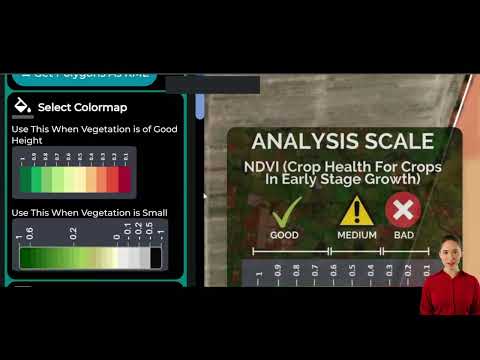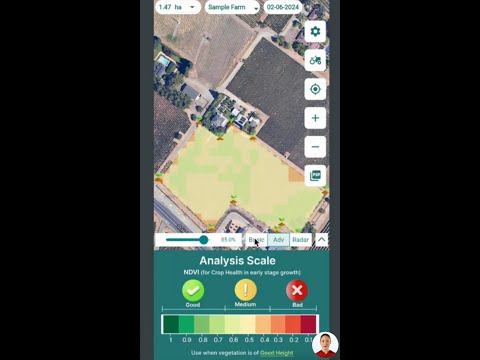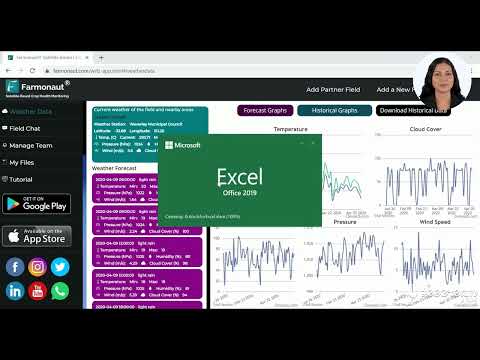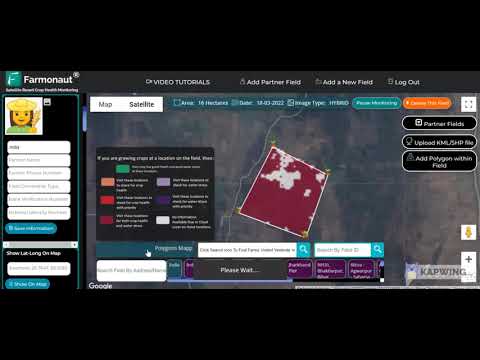Cumberland River Flood Alert: Nashville’s Critical Water Management Strategies Unveiled
“The Cumberland River at Nashville is expected to crest just below minor flood stage, prompting 24/7 operations.”
As we face critical flood conditions in the Cumberland River Basin, the U.S. Army Corps of Engineers Nashville District has activated 24/7 operations to manage the rising water levels across the region. In this comprehensive blog post, we’ll delve into the current flood situation, explore the emergency flood operations in place, and provide crucial information on water management strategies and flood safety tips.
Current Flood Conditions and Forecasts
The Cumberland River Basin is experiencing significant water level increases, prompting immediate action from water management authorities. Let’s examine the current conditions and forecasts for key areas:
Cumberland River at Nashville
The Cumberland River at Nashville is forecast to crest just below minor flood stage at 39.7 feet. While this is slightly below the official minor flood stage of 40 feet, we can still expect to see impacts in low-lying areas:
- Riverfront Park will experience flooding
- Access points from Nissan Stadium will become inaccessible
- Low-lying areas near the I-24 and I-65 bridges will see flooding
- Greenway areas will be impacted
- Water may approach industrial properties on Adams St, Cement Plant Rd, Cowan St, Cowan Ct, and Davidson St

Red River at Port Royal
The situation at Port Royal is particularly concerning. The Red River is expected to crest at 46.8 feet, which would mark the third-highest flood crest on record since 1937. To put this into perspective:
- 2010 flood crest: 49.5 feet
- 1975 flood crest: 48.3 feet
- Current forecast: 46.8 feet
With water levels this high, we anticipate significant impacts:
- Homes on Rivermont Dr, River Run, Idlewood Dr, and Wimbledon Ct may experience floodwaters
- Multiple roads could become impassable
Cumberland River at Clarksville
The Cumberland River at Clarksville is expected to crest at 52 feet around midnight Sunday into Monday. This level of flooding will have widespread effects:
- Most agricultural properties will be impacted
- Many commercial properties will see flooding
- Riverfront Park will be inundated
- Roads likely to be affected include:
- South Riverside Dr
- North Riverside Dr
- Quarry Rd
- Kraft St
- Zinc Plant Rd
Cumberland River at Dover
At Dover, the Cumberland River is expected to crest just above minor flood stage at 69.1 feet by noon Monday. While not as severe as other locations, we still anticipate:
- Roads near the river becoming impassable
- Flooding of nearby farmland
Additional Areas of Concern
We’re also closely monitoring several other locations:
- Upper Cumberland (Williamsburg, Barbourville, Pineville, and Baxter) – Additional flooding expected
- Harpeth River near Kingston Springs – Forecast to exceed flood stage
| Location | Current Water Level (ft) | Projected Crest (ft) | Potential Impacts |
|---|---|---|---|
| Nashville | 38.5 | 39.7 | Minor flooding in low-lying areas, park closures |
| Clarksville | 50.2 | 52.0 | Widespread flooding of agricultural and commercial properties |
| Dover | 67.8 | 69.1 | Road closures, farmland flooding |
Emergency Flood Operations and Dam Management
“U.S. Army Corps of Engineers Nashville District manages flood risks across multiple areas, including Nashville, Clarksville, and Dover.”
To manage the rising flood risks and balance water levels throughout the Cumberland River Basin, the U.S. Army Corps of Engineers has implemented several critical operational adjustments:
Barkley Dam
Spillway releases have been increased to 165,000 cubic feet per second (CFS), coordinated with TVA & USACE.
Old Hickory Dam
Spillway releases have been increased to 85,000 CFS.
Cordell Hull Dam
Spillway releases have been increased to 52,000 CFS.
Cheatham Lock & Dam
All spillway gates have been removed clear of the water surface. The project is currently in free flow (as designed), releasing 112,000 CFS. Navigation has been closed through at least Tuesday.
Center Hill, Wolf Creek, Dale Hollow, & J. Percy Priest Dams
These dams are currently not releasing water to limit downstream flooding.

Understanding CFS and Its Importance in Flood Management
Cubic Feet per Second (CFS) is a crucial measurement in water management. Let’s break down what it means and why it’s so important:
- 1 CFS = 7.5 gallons of water flowing per second
- 100,000 CFS can fill an Olympic-sized swimming pool in just 3 seconds
Large dam releases, measured in CFS, help manage flood risks downstream but also create dangerous water conditions near the dams. To help reduce flood risks downstream, the Corps is currently holding back 325,000 CFS of water in its flood control reservoirs:
- Wolf Creek
- Dale Hollow
- Center Hill
- J. Percy Priest
Between 12 p.m. and 6 p.m. today, these reservoirs have absorbed the full inflow without releasing any water, effectively removing 325,000 CFS from the Cumberland River system. This proactive measure helps lower river levels in flood-prone areas while allowing time for controlled releases once conditions improve.
Flood Safety Tips and Public Reminders
As we manage this critical flood situation, public safety is our top priority. We urge all residents and visitors to follow these important safety guidelines:
- Stay away from dam release areas: High flows create strong currents, sudden surges, and life-threatening conditions for boaters, anglers, and swimmers.
- Avoid tailwaters and floodgates: Areas where water is actively being released are extremely dangerous.
- Respect all warning signs and restricted areas near dams.
- Do not attempt to navigate through high-flow areas: These waters are extremely turbulent and pose significant risks.
Remember, while dams and reservoirs help regulate flooding, unregulated streams and tributaries can still rise quickly. Flash flooding remains a concern, and residents in flood-prone areas should stay alert and monitor local emergency alerts.
The Importance of 24/7 Operations
The activation of Level 1 (24/7 Operations) by the U.S. Army Corps of Engineers Nashville District is a clear indication of the severity of the current flood conditions. This level of operation is only activated in extreme circumstances, such as:
- Significant rainfall events
- Dam safety concerns
- Major flood risks
During 24/7 operations, the Corps is actively coordinating with federal, state, and local emergency agencies to mitigate risks and keep the public informed. This heightened level of vigilance and coordination is crucial for effective flood management and public safety.
River Basin Flood Management Techniques
Managing floods across an entire river basin requires a comprehensive approach. The U.S. Army Corps of Engineers employs several techniques to mitigate flood risks:
1. Reservoir Management
Strategically releasing or holding water in reservoirs to control downstream flow rates.
2. Levee Systems
Maintaining and monitoring levees to protect low-lying areas from flooding.
3. Flood Warning Systems
Utilizing advanced monitoring and forecasting tools to provide early warnings to communities.
4. Channel Improvements
Modifying river channels to increase their capacity and improve water flow.
5. Floodplain Management
Working with local authorities to implement zoning and land-use policies that reduce flood risks.
The Role of Technology in Flood Management
Modern flood management relies heavily on advanced technologies to predict, monitor, and respond to flood events. Some key technologies include:
- Satellite Imagery: Provides real-time data on water levels and flood extents.
- GIS Mapping: Helps visualize flood-prone areas and plan mitigation strategies.
- Weather Radar Systems: Offer precise rainfall predictions crucial for flood forecasting.
- Automated Gauge Networks: Provide real-time data on river levels and flow rates.
- Hydraulic Modeling Software: Simulates flood scenarios to improve preparedness.
At Farmonaut, we understand the importance of leveraging technology in agriculture and environmental management. While our focus is on precision agriculture, many of the satellite-based technologies we use can also be valuable in flood monitoring and management.
Impact of Flooding on Agriculture
Flooding can have severe consequences for agricultural lands and operations. As we monitor the situation in the Cumberland River Basin, it’s important to consider the potential impacts on farming communities:
- Crop Damage: Excessive water can drown crops, particularly in low-lying fields.
- Soil Erosion: Floodwaters can wash away valuable topsoil, reducing soil fertility.
- Delayed Planting: Waterlogged fields may force farmers to postpone planting schedules.
- Infrastructure Damage: Farm buildings, equipment, and irrigation systems may be damaged.
- Livestock Risks: Flooding can threaten livestock health and safety, requiring evacuation in severe cases.
Farmers in flood-prone areas should stay informed about water levels and be prepared to implement their flood response plans. Technologies like satellite-based crop monitoring can be valuable for assessing and managing flood impacts on agricultural lands.
The Importance of Weather Data in Flood Management
Accurate and timely weather data is crucial for effective flood management and prediction. Key weather factors that influence flooding include:
- Rainfall intensity and duration
- Snowmelt rates
- Temperature changes
- Wind patterns
By closely monitoring these factors, water management authorities can make informed decisions about dam releases, flood warnings, and evacuation orders. At Farmonaut, we recognize the importance of weather data in agriculture and offer tools to help farmers access and interpret this critical information.
Community Preparedness and Response
Effective flood management requires not only the efforts of water management authorities but also the cooperation and preparedness of local communities. Here are some key aspects of community flood preparedness:
- Emergency Response Plans: Communities should have well-defined plans for flood emergencies, including evacuation routes and shelter locations.
- Public Education: Residents should be educated about flood risks, safety measures, and how to access emergency information.
- Early Warning Systems: Implementing robust systems to alert residents of impending flood dangers.
- Flood Insurance: Encouraging residents in flood-prone areas to obtain adequate flood insurance coverage.
- Community Drills: Conducting regular flood response drills to ensure readiness.
By working together, communities can significantly reduce the impact of flood events and ensure the safety of residents.
Long-term Flood Management Strategies
While immediate flood response is crucial, long-term strategies are essential for sustainable flood management. Some key long-term approaches include:
- Green Infrastructure: Implementing natural flood defenses like wetlands and permeable surfaces to absorb excess water.
- Urban Planning: Designing cities with flood resilience in mind, including elevated structures and flood-resistant building materials.
- Watershed Management: Implementing practices to manage entire watersheds, reducing overall flood risks.
- Climate Change Adaptation: Considering the impacts of climate change on flood patterns and adjusting strategies accordingly.
- Continuous Research: Investing in ongoing research to improve flood prediction and management techniques.
These long-term strategies require collaboration between government agencies, scientific institutions, and local communities to create more resilient and flood-resistant environments.
The Role of Satellite Technology in Flood Monitoring
Satellite technology plays a crucial role in modern flood monitoring and management. At Farmonaut, we specialize in satellite-based agricultural solutions, and many of these technologies have applications in flood management:
- Real-time Monitoring: Satellites provide up-to-date imagery of flood-affected areas, helping authorities assess the extent of flooding.
- Predictive Modeling: Satellite data can be used to create models that predict flood patterns and identify at-risk areas.
- Damage Assessment: Post-flood satellite imagery helps in quickly assessing damage to infrastructure and agricultural lands.
- Soil Moisture Monitoring: Satellites can measure soil moisture levels, which is crucial for predicting flood risks and agricultural impacts.
While our focus at Farmonaut is on agricultural applications, the power of satellite technology in environmental monitoring is undeniable.
Frequently Asked Questions
Q: What should I do if my area is at risk of flooding?
A: Stay informed through local news and emergency channels. Prepare an emergency kit, know your evacuation route, and be ready to move to higher ground if necessary.
Q: How can I protect my property from flood damage?
A: Consider installing flood barriers, moving valuable items to higher floors, and ensuring proper drainage around your property. It’s also crucial to have flood insurance.
Q: What is the difference between a flood watch and a flood warning?
A: A flood watch means flooding is possible, while a flood warning means flooding is occurring or will occur soon.
Q: How can satellite technology help in flood management?
A: Satellite technology provides real-time monitoring of flood-affected areas, helps in predictive modeling, and assists in damage assessment. At Farmonaut, we use similar technologies for agricultural monitoring.
Q: What role do dams play in flood control?
A: Dams help control water flow, storing excess water during heavy rainfall and releasing it gradually to prevent downstream flooding.
Conclusion
As we continue to monitor the flood situation in the Cumberland River Basin, it’s clear that effective flood management requires a combination of advanced technology, strategic planning, and community preparedness. The U.S. Army Corps of Engineers Nashville District’s 24/7 operations highlight the seriousness of the current conditions and the importance of coordinated efforts in mitigating flood risks.
While our focus at Farmonaut is on agricultural technologies, many of the satellite-based solutions we develop have applications in environmental monitoring and management. As we face increasing challenges from extreme weather events, the role of technology in predicting, monitoring, and responding to these events becomes ever more crucial.
Stay informed, stay prepared, and stay safe as we navigate through this flood event. Remember to follow all guidelines and warnings issued by local authorities, and don’t hesitate to seek help if needed.
Earn With Farmonaut: Affiliate Program
Earn 20% recurring commission with Farmonaut’s affiliate program by sharing your promo code and helping farmers save 10%. Onboard 10 Elite farmers monthly to earn a minimum of $148,000 annually—start now and grow your income!








